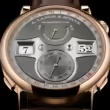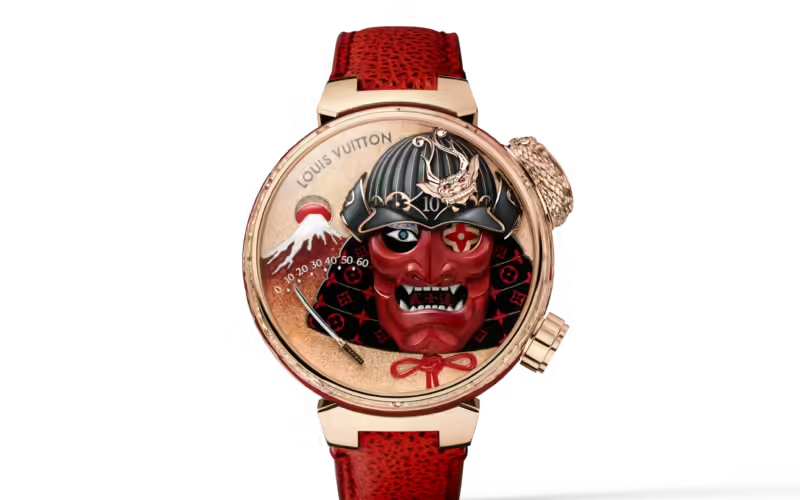Louis Vuitton continues to establish itself as a dominant force in the rarefied world of automata watches with its latest horological masterpiece.
Following the success of the GPHG-winning Tambour “Carpe Diem,” the luxury powerhouse has unveiled a new collection that further demonstrates its commitment to this specialized corner of watchmaking—a tradition dating back to 3rd Century BCE China, though more directly connected to the singing bird boxes created by Jaquet-Droz in 1785.
Ancient Tradition Meets Modern Luxury
While brands like Ulysse Nardin have made their mark with provocative automata, Louis Vuitton has carved out its own distinctive territory with pieces that blend mechanical ingenuity with artistic excellence.
These new releases, previewed earlier this year alongside the brand’s collaboration with master watchmaker Kari Voutilainen, represent the apex of horological artistry—albeit at a price point and exclusivity level that ensures most enthusiasts will only ever experience them through photographs.
The standout piece, the Tambour Bushido Automata, shares its mechanical DNA with the celebrated “Carpe Diem” watch. Powered by the LV 525 caliber featuring 426 components and an impressive 100-hour power reserve (creatively indicated by the sun rising over Mount Fuji), this timepiece transforms from an artistic display into a functional timekeeper at the press of a button located at 2 o’clock.
Extraordinary Craftsmanship Beyond Timekeeping
The level of craftsmanship invested in the Bushido is staggering. The dial and activation push-piece required 140 hours of engraving alone. The Samurai’s menpo (facial armor) is meticulously engraved in white gold using bas-relief techniques, while the helmet’s yokai creature features ruby-set eyes and rose gold construction.
When activated, the watch performs a mesmerizing sequence: the yokai shifts to reveal a jump hour display, the katana moves to indicate minutes, and the samurai’s expression intensifies as its left eye transforms from a rounded LV Monogram Flower to a pointed form. The mouth then opens to reveal the word “Bushido” in Japanese characters.
The case engraving, accented with red enamel, required an additional 200 hours of work. Multiple enameling techniques showcase extraordinary artisanal skill: paillonné enamel creates the golden dial tone through layers of pink enamel, silver leaf, and translucent enamel, with a final coat of fondant enamel for shine. Mount Fuji is rendered in cloisonné enamel, while the mask combines red enamel layers with a special antiqued finish.
Master engraver Dick Steenman sculpted the mask before it received multiple enamel treatments. The helmet (kabuto) underwent the calamine technique—fired at high temperature to create carbonaceous residue that was then painstakingly hand-finished to allow the underlying gold to shine through.
The 46.8mm by 14.4mm 18K pink gold case is undeniably substantial, but size seems almost irrelevant when considering the artistic achievement it houses. Throughout the watch, Louis Vuitton has incorporated signature elements like monogram flowers and carefully selected gemstones, creating a timepiece that transcends conventional watchmaking to become a performing mechanical sculpture for the wrist.








